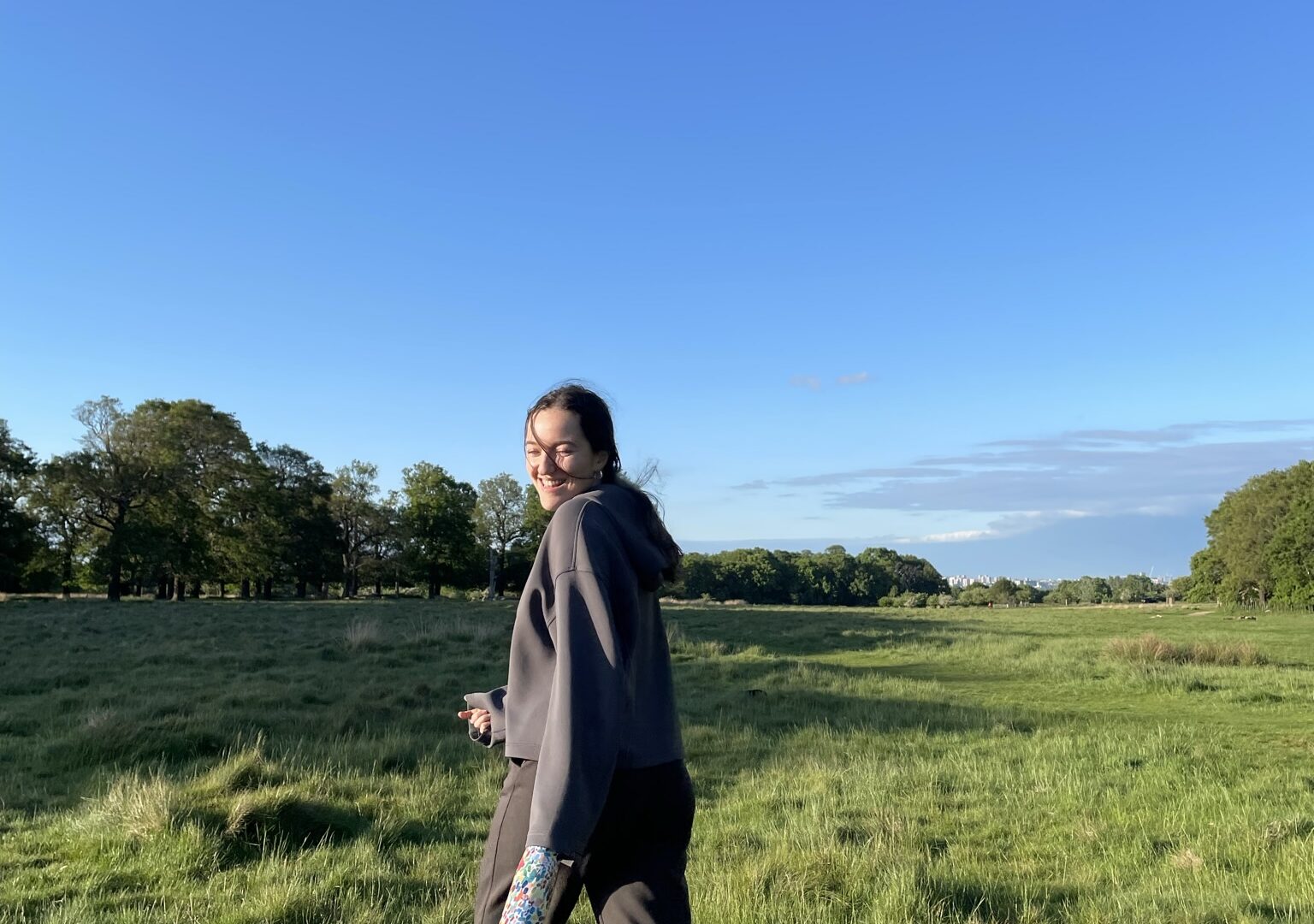
Inspired by nature: Nergiz De Baere
-
Date posted: 27/04/2023
-
Time to read: 8 minutes

Nergiz De Baere
Feminist, environmentalist, writer and purveyor of planet-saving hemp underwear, Nergiz De Baere is a woman of many parts. And all of them, she says, have been inspired and sustained by the awesome power of Mother Nature.
“There was one particular day in February 2019 when the temperature hit 27 degrees in London,” says Nergiz, who is 26. “I remember feeling really concerned by this strange, unnatural weather, but it shocked me that there didn’t seem to be any urgency from anyone about how abnormal it was.”
Prompted by this incident, and a creeping sense of worry about the environment, she launched ChicksForClimate, a website and newsletter with a feminist slant on climate and other ecological topics.
“Research shows that women are more likely to be concerned about environmental issues and that 80 per cent of the people displaced by climate change around the world are women,” she explains.
In creating the page, Nergiz says she was struck by the cultural and spiritual connection between women and nature. “If you think about it, it’s all there in the very words we use to describe the natural world’s effect on us; Mother Nature – it heals and cares for us.”
She believes humans are facing an environmental crisis because: “We have forgotten we are part of nature, too.”
Her connection to this powerful concept came at an early age in her family’s native Azerbaijan, a former Soviet bloc country bordering Iran and the Caspian Sea, which encompasses nine of the world’s 11 possible climate zones.
“We have a farm out there – so I grew up around vegetables being grown, collecting eggs from free-range chickens and learned about nature through this activity,” she says. “If you grow food you have to be outside and you start to notice the wildflowers and the bees and how they all connect and depend on each other.”
A good horticulturalist works with the land, not against it, she says, because: “You get more out of it, that way. It’s just sand near the capital, Baku, where my family live, but my grandmother managed to build a complete oasis, harvesting watermelon and other fruits.”
Nergiz’s contribution to helping us tread more lightly on the planet is Magi, her women’s hemp underwear company.
Appalled by the waste of resources in the fashion industry – the average cotton T-shirt requires around 2,700 litres of water in its manufacture – she started researching hemp fibre which, she says, was once the material of choice for garment-making.
“Hemp uses around 80 per cent less water (than conventional fibres) and far fewer pesticides to grow; it’s carbon negative, incredibly strong, and has anti-microbial properties,” she says. “Sadly, because of its associations with marijuana, it was made illegal in the 1920s and research and development into machinery and its technical use more or less stopped. But, if we could bring it back, it could replace half our cotton use and the fashion industry’s environmental footprint would go down.”
Her fondness for practical solutions and her work with ChicksForClimate lead to her being commissioned by Hachette to write the book 365 Ways To Save the Planet. Published last year, it eschews lectures and complicated ideas and instead gives practical advice for people who want to be more environmentally friendly.
“I told the publisher it wouldn’t be a book with conventional advice about recycling,” she says. “For instance, one of the best ways anyone can help change the system is to ask for their pension fund not to be invested in shares from fossil fuel companies.”
One of life’s doers, Nergiz believes that: “Action is the best antidote to anxiety. Fear and worry lead to doom-ism but if you feel like you’re doing your part and fighting back, it helps you to sleep better at night and live more hopefully during the day.”
Her daily routine of seeking out natural places, such as Richmond Park and Kew Gardens near her family home in south London, helps guard against burnout.
But, when time doesn’t allow her to get to these spaces she will: “Deliberately walk in the suburban streets where I know there are more trees. I try and notice their leaves or blossom; the birds and insects around them, that kind of detail.”
Trees inspire her: “Look up and you’ll see that their branches look like the vessels in your lungs.”
She also admires their rootedness. “They stay in one place their whole lives and are such an example of generosity,” she says, explaining how young trees try and help older ones by giving them nutrients when they are ailing or diseased. “Their interconnectedness is something we can really learn from.”